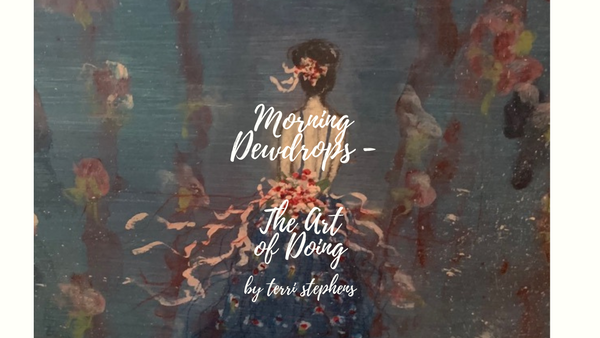
Different Effects With Artisan Enhancements Pearl Plaster
Below are three videos for your enjoyment on different ways to use Artisan Enhancements Pearl Plaster. Artisan Enhancements brings you special effects for designer level results.
The first video is a sample board I created using the Pearl Plaster over a raised stencil and over Artisan Enhancements gold foil.
______________________________________
.
WHAT IS ARTISAN ENHANCEMENTS PEARL PLASTER?
Artisan Enhancements™ Pearl Plaster is a thick water-based acrylic plaster medium used to create opulent pearlescent effects. Formulated with advanced next generation bio-based chemistry - Pearl Plaster is non-toxic, zero VOC, and eco-friendly! Check out the Short Videos Below.
Use: Develop shimmery finishes, reminiscent of a luxurious velvet. Pearl Plaster is an ideal medium for embossing, relief, and trowelled techniques. Pearl Plaster has a tintable white base, perfect for developing custom light and pastel colored pearlized finishes. Pearl Plaster can be combined with Scumble to create a pearl glaze. Great for a variety of interior and exterior projects such as: furniture, cabinetry, decorative arts, and walls.
______________________________________
VIDEO 1
Sample Board Video of Pearl Plaster Over Raised Stencil & Foil
Here are some quick links from our website for more information on DIY Paint and Artisan Enhancements. You can also find tips from the Main Menu on all Artisan Enhancement Products and DIY Paint (Why DIY Paint, DIY Paint Facts & FAQs, DIY Paint Best Practices for Best Results) and more.
Tips on Using Artisan Enhancements Leaf & Foil Size
Shop & Learn about Artisan Enhancements
Shop & Learn DIY Paint Finishes
.
_______________________________________________
VIDEO 2
Artisan Enhancements Pearl Plaster & Scumble
Create a pearl glaze or tinted pearl glaze This video shows you how to create a tinted pearl glaze by combining a water-based paint (We use DIY Paint.), Pearl Plaster & Scumble (1 part Paint to 2 parts Pearl Plaster to 3 parts Scumble). (Scumble information and link below.)
For a pearlized glaze (untinted) - Combine Pearl Plaster and Scumble (mix 3-part Scumble to 1-part Pearl Plaster).
Tinting With Just Pearl Plaster - Pearl Plaster can be tinted with a variety of pigment sources including universal tint systems, water-based paints, and mineral pigments creating pearlized pastels (start with mix of 3-parts Pearl Plaster to 1-part tint). - FYI - THIS IS THE METHOD WE USED ON THE IFLEX WOOD PRODUCTS (FLOWERS) - YOU TUBE VIDEO WILL BE OUT THIS WEEK!
SCUMBLE -
Scumble Artisan Enhancements™ Scumble is a translucent, glaze-like, medium and extender used to increase the open time of paint. Formulated with advanced chemistry - Scumble is non-toxic, low VOC, and eco-friendly!
___________________________________________
.
VIDEO 3
More Tips on Using Artisan Enhancements Pearl Plaster
.
Coverage: Varies based on application.
Prep: Before getting started, review tip sheets or visit your local retailer for additional instructions. Surfaces should be free of cleaner residue, dust, dirt, and debris. If painting a basecoat, paint should be completely dry 24 hours before applying plaster. Porous or untreated surfaces may need to be sealed with a topcoat.
Recommended Application: Stir before use - Do not shake. Brush/trowel/roll-on Pearl Plaster to a dry prepared or base painted surface to achieve a variety of finishes. For pearl accents/highlights – Dry brush or stipple plaster with chip/detail brush or sea sponge directly on to a prepared surface. For easy stencil relief and heavy plaster techniques - Use a Color Shaper or trowel to apply plaster to a prepared surface. For an overall textured effect - Use a roller to apply plaster to a prepared surface. Create a pearl glaze- Combine Scumble and Pearl Plaster (mix 3-part Scumble to 1-part Pearl Plaster). Tinting - Pearl Plaster can be tinted with a variety of pigment sources including universal tint systems, water-based paints, and mineral pigments (start with mix of 3-part Pearl Plaster to 1-part tint). Do not apply product when air and surface temperatures are below 50°F (10°C).
Dry Time: Allow plaster layer to dry overnight before applying additional layers or sealing. If adding more layers of paint, plaster, glaze, or a color wash - Once first layer of plaster is dry, a thin layer of topcoat may be needed before applying additional layers. Dry times between layers/sealer may be extended due to number of coats/layers, humidity, and cooler temperatures.
Surface Care: Once sealed and cured, maintain surfaces with a dry or damp soft microfiber cloth. Avoid excessive exposure to moisture. Avoid repeated scrubbing. Avoid cleaning with harsh, caustic, or abrasive cleaners.
Clean up & Storage: Easy clean up with mild soap and water. Storage - seal the container tightly. Do not freeze or expose to direct sunlight/extreme heat. RECYCLE CONTAINERS in accordance with local laws.
Tips & Hints:
- Trowel Application: Load a small amount of plaster on to the edge of the trowel. Apply plaster while at an angle of 45°, working from wet to dry areas, to cover the entire surface. As the plaster begins to setup, keeping the blade of the trowel at a 45° angle, smooth the surface. Allow the first coat to completely dry. Repeat the process if desired.
- Roller Application: Use a 3/8" nap roller to create layers of texture on surfaces. Lightly mist roller with water before loading for easier application. Apply plaster to surface using controlled sweeping motions. As plaster begins to set-up, knock down and smooth with a trowel.
- Relief Stencil: Load a small amount of plaster to a roller, stencil brush, or edge of a Color Shaper. Using desired tool, push the plaster through the stencil with light pressure. Lift the stencil to reveal a relief pattern.
- Combine Pearl Plaster, Scumble, and Tint to create an ultra smooth velvety durable pearly finish
- Smooth and polish plaster with 500-1200 grit sandpaper.
- For heavy thick textures, allow each layer to fully dry overnight before proceeding to the next layer.
